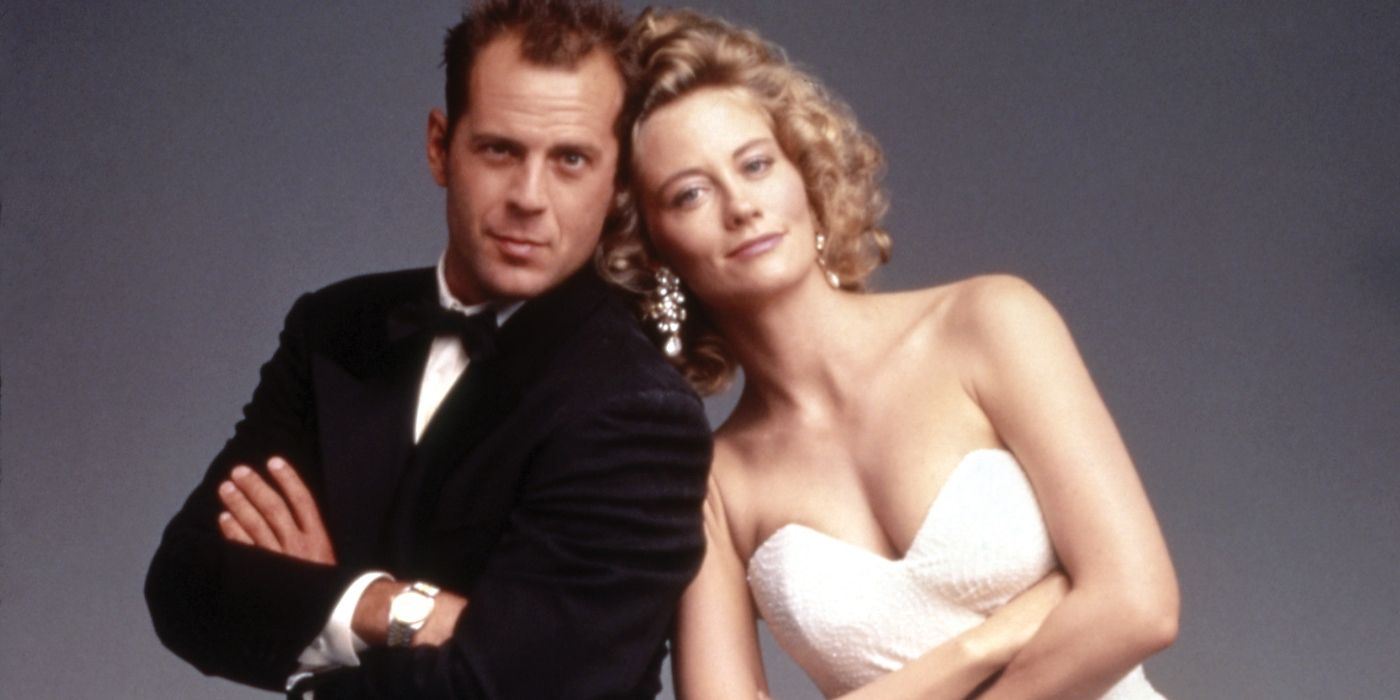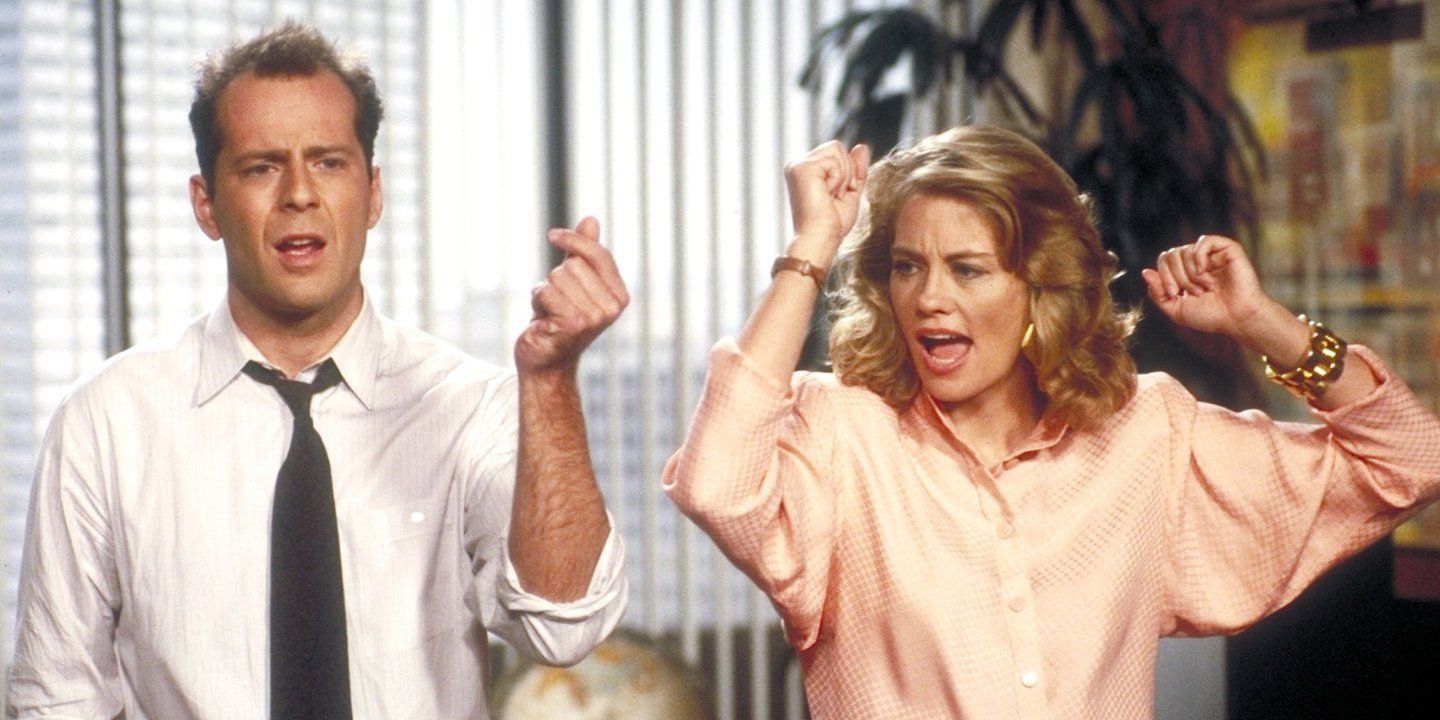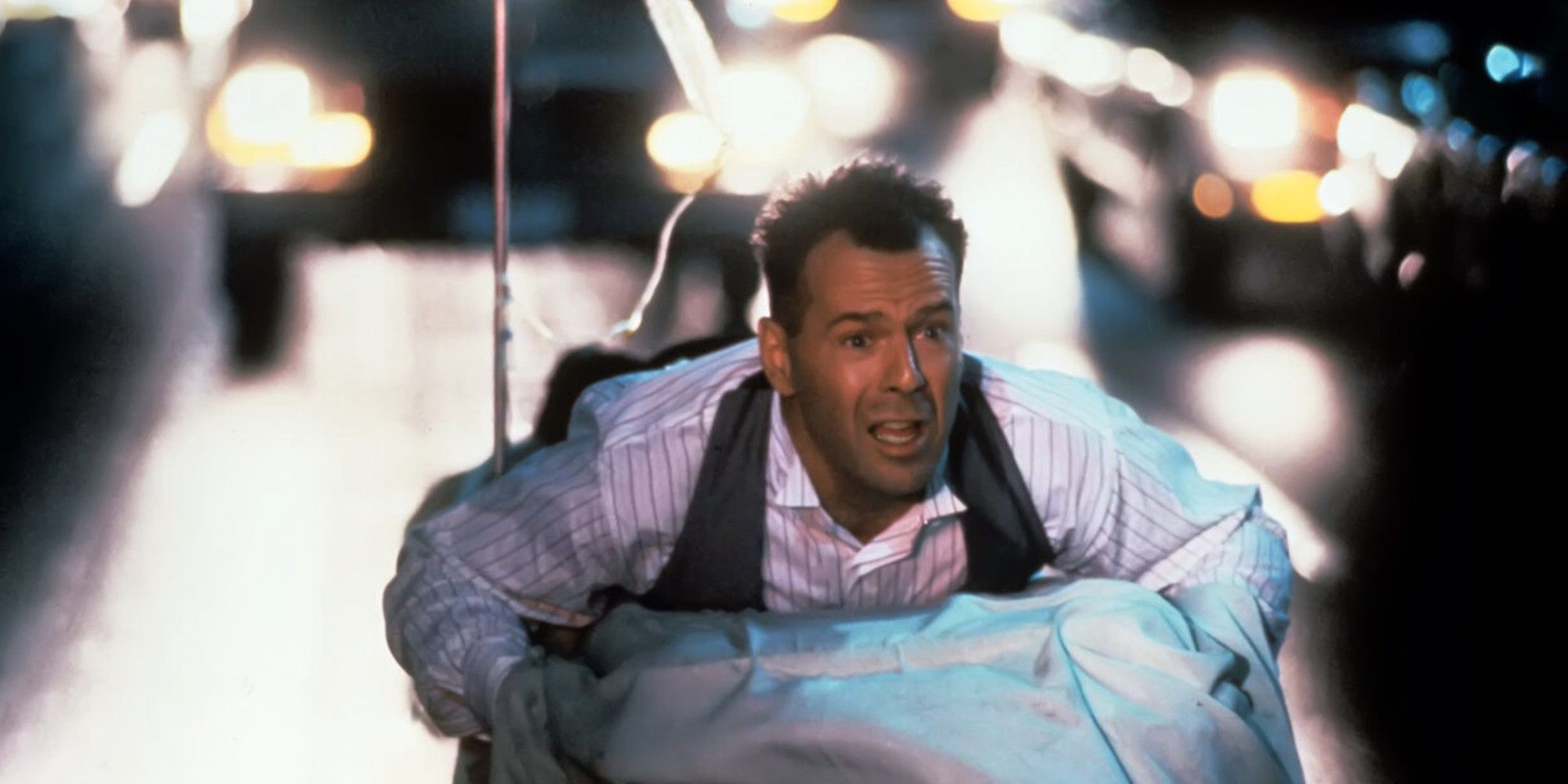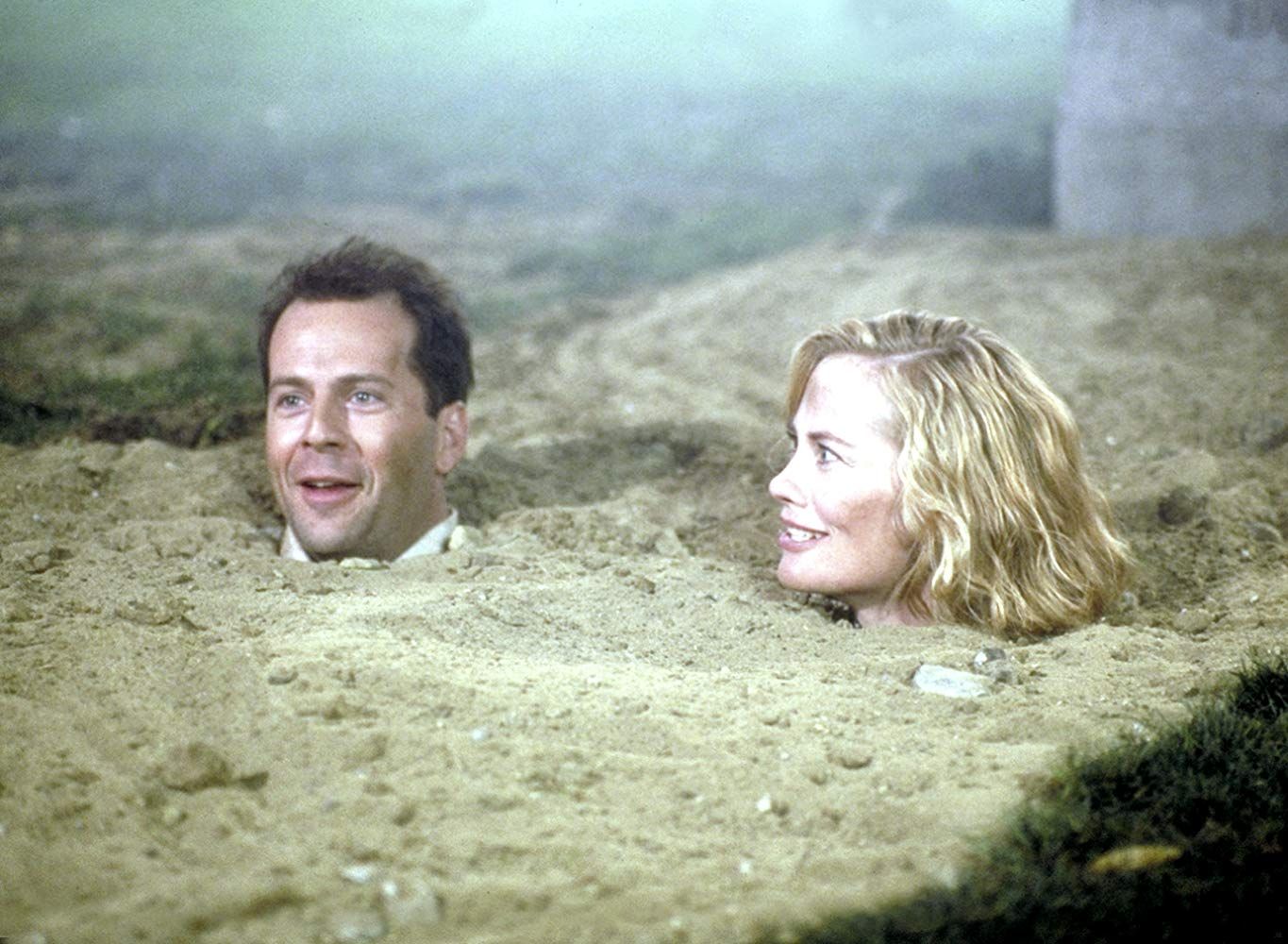The Big Picture
- Moonlighting, the 1980s mystery comedy series, was innovative for its time, combining smart dialogue, twisty mysteries, seamless comedic timing, and a "will they or won't they?" romance between its leads.
- The show broke the fourth wall and addressed the audience directly, a revolutionary move in the mid-80s, and even featured a light-hearted intro by Orson Welles in its black-and-white film noir episode.
- The "Moonlighting Curse" refers to the decline in ratings and eventual cancellation of the show after the main characters consummated their relationship, suggesting that some shows may lose their appeal after the central romance is resolved.
The decade of the 1980s threw a little bit of everything at us when it came to television genres. There were police procedurals like Hill Street Blues, mindless action fare like The A-Team and Knight Rider, medical dramas including St. Elsewhere, and of course, the uber-popular wealthy family nighttime soaps Dallas, Dynasty, and Falcon Crest. But among all these various styles of hour-long serials, there was one show that stood out from the rest for being the perfect combination of all of them, yet a unicorn unto itself: the Glenn Gordon Caron-created mystery comedy series Moonlighting.
The series that just landed on Hulu stars Cybill Shepherd and Bruce Willis, and the private investigation show is still difficult to pin down for all the right reasons. The show debuted in 1985 and immediately drew an audience for its willingness to be innovative, well-written comedy, and unmatched chemistry between its two leads. Shepherd was coming off of successful movies like Taxi Driver and The Last Picture Show, while Willis was an unknown commodity that would flash so much gravitas and charisma as David Addison that he would parlay Moonlighting into one of the most prolific and successful careers of the last 50 years. There were all kinds of familiar faces making cameos — and we should also mention that the show is also responsible for a not-so-flattering term you may have heard before called "the Moonlighting Curse," which we will get into a little later.
Bruce Willis and Cybill Shepherd's Chemistry Is Off the Charts in 'Moonlighting'
In the pilot episode. Maddie Hayes (Shepherd) is a former A-list fashion model whose face has graced dozens of magazines and billboards. Unfortunately, the small fortune she had banked away ends up being stolen by her unscrupulous accountant, and she quickly finds herself in need of liquidating all of her assets just to pay her mortgage. One of those investments is the Blue Moon Detective Agency, run by a winsome David Addison.
Within just a few scenes, David has sweet-talked Maddie into holding onto the agency and joining him as one-half of the Blue Moon investigative team and as a viewer, you know quickly that this is a tandem that you want to tune in each week to see. Each episode has a fresh and clever premise and though it uses familiar plot devices, it does so in a way that was innovative for the time. Never before had we seen a show that was the perfect storm of smart dialogue, twisty mystery, seamless comedic timing, and of course, the "will they or won't they?" element of the romantic overtures of the attractive duo — which, again, rubs up against the aforementioned "Moonlighing Curse."
'Moonlighting' Tried New and Different Things
Aside from the never-before-seen combination of all the different elements listed above, Caron never hesitated to step out on a limb and do something different with Moonlighting. After taking the country by storm with the first season of Blue Moon capers, Caron decided to begin the second season with Willis and Shepherd breaking the fourth wall and addressing the audience directly. This was unheard of in the mid-80s. As Addison and Hayes, the two welcome us back for its encore season and whimsically invite us in to enjoy more hijinks along with them.
Caron doubled down to begin Episode 4 of the second season in 1986, managing to cajole the legend Orson Welles to deliver a light-hearted intro for the episode called, "The Dream Sequence Always Rings Twice," which switches from color to a black-and-white send-up of a '40s film noir piece with Maddie as a femme fatale. Wells cordially warns us, "Do not adjust your televisions. There is nothing wrong with your picture." The rest of the episode is a throwback to the bygone era of big bands and blonde bombshells. This was all revolutionary stuff for the staid and stuffy executives of the three major networks (ABC, NBC, CBS) at the time.
Okay, Let's Talk About "The 'Moonlighting' Curse"
Whether Moonlighting deserved this rather ignominious moniker is still the subject of debate for big television fans like you and me. Legend has it that the "will they or won't they?" level of romantic heat that Maddie and David shared may not have been addressed in the right way and at the right time. After just 38 episodes, which was a lifetime during the era of the big three networks, Caron and the rest of the writers decided to finally let David and Maddie consummate their relationship. The characters finally have a roll in the hay followed by a long-term intimate relationship, which all kicks off in Episode 39, the fourteenth installment of the third season, "I Am Curious... Maddie." However, after the leads got together, the ratings went into a downward spiral and the show gradually entered into the TV twilight zone that is irrelevance. By the series' fourth and final season, Willis and Shepherd were barely sharing any scenes together — in part because Willis' success with Die Hard left him with a desire to lean into more movie-making rather than continue with the series.
Moonlighting will always be scrutinized for playing the consummation card too quickly, and the resulting consequence appeared to be taking years off of the show’s run, which concluded in 1989. While the series carried on for two more seasons, the electricity of the "what if?!" was gone, and audiences reacted accordingly. This is why when you see a television couple like Sam and Rebecca in Cheers, Rick and Michonne in The Walking Dead, Bones and Brennan in Bones, or Jake and Amy in Brooklyn Nine-Nine (and there are hundreds more), they are immediately compared to the litmus test that is Maddie and David in Moonlighting to determine whether the show is still as good as it was before they hooked up. Is it fair? Maybe not, but the three great seasons we got from the creative team behind Moonlighting are still more than worth it.
Watch for Young Stars On the Rise and Familiar Faces in 'Moonlighting'
Another thing that should make Moonlighting a worthwhile time investment is the names that pop up as co-stars, ones who either haven't become big stars yet or are faces that you remember from other shows and movies. In the pilot, Liz Sheridan makes a great cameo before we knew her as the doting and overprotective mother of the intimately deficient and neurotic comedian. In the second episode, a nobody named Tim Robbins — who would later become Andy Dufresne in The Shawshank Redemption — plays a bumbling hitman who appears in just one scene. There are many others who got to make appearances on Moonlighting during its tenure, including a baby-faced Paul Rudd, Mark Harmon, Brad Dourif, Dr. Joyce Brothers, Ray Charles, Eva Marie Saint, and Whoopi Goldberg.
If you have a few hours to binge, take a trip back to the '80s and see where some of your favorite relationships on TV today got their start. We likely wouldn't have many of them today without Moonlighting's David and Maddie.
Moonlighting is currently available to stream on Hulu.





